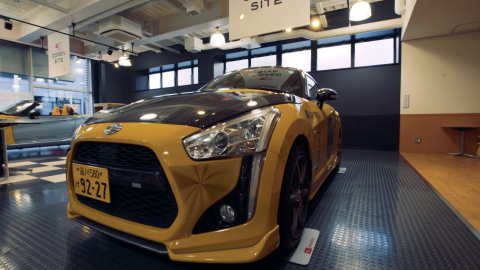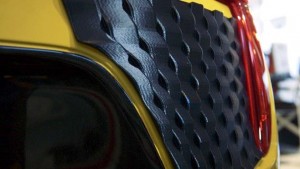
Latest News
September 15, 2016
In the automotive sector, 3D printing is seen as a key enabling technology for mass customization – the ability to quickly and cheaply add custom elements to individual vehicles. Japanese automaker Daihatsu Motor Co. has launched a new 3D printing pilot project that will allow customers to add unique elements to their new convertibles.
Customers buying Daihatsu’s Copen convertibles will now have the option of adding 3D-printed effects “skins” to customize their vehicles. The company is using Stratasys FDM 3D printing technology to build the three-dimensional patterns, which can be placed on the front and rear bumpers.
“The effect skin project was very attractive to us,” said Osamu Fujishita, chief engineer of the product planning division at Daihatsu Motor Company. “We’re interested in expanding the market for customized plastic bodied cars. And we see Stratasys 3D printing technology as extremely effective for this.”
The 3D printing process allows Daihatsu to offer individual customization at an affordable scale. “We believe on-demand production with 3D printing offers definite benefits to supply chain efficiencies and allows easy access for customers,” Fujishita said. “So we see it as essential in growing the market for these products and that’s how we are moving forward.”
Daihatsu engineers worked with designer Kota Nezu and 3D modeling artist Sun Junjie to create the skins. The skins, which feature a variety of geometric and organic patterns, are printed on Fortus Production 3D Printers using Stratasys ASA thermoplastic 3D printing material. There are 15 patterns available in 10 different colors.
“What would have taken two to three months to develop can now be produced in two weeks,” says Fujishita said.
The designers also worked closely with Stratasys to create the effects skins. “It’s much more than Stratasys producing something that we requested. We think of ideas together to make things work better to reach the final goal,” Nezu said. “We can form that sort of a team with them. That’s one of the biggest benefits.”
You can learn about the process in the video below.
Source: Stratasys
Subscribe to our FREE magazine, FREE email newsletters or both!
Latest News
About the Author
Brian Albright is the editorial director of Digital Engineering. Contact him at [email protected].
Follow DE







